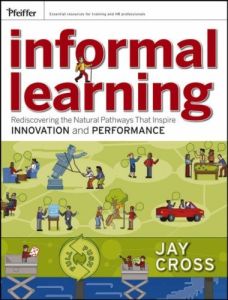Join getAbstract to access the summary!

Join getAbstract to access the summary!
Jay Cross
Informal Learning
Rediscovering the Natural Pathways That Inspire Innovation and Performance
Pfeiffer, 2006
What's inside?
Once you accept that people learn better outside the classroom, how should you invest your training funds?
Recommendation
Do people learn best by sitting in a classroom taking notes? Not according to “eLearning” expert Jay Cross. Instead, he says, companies should champion nontraditional, informal learning methods, including: “unconferences,” “unworkshops,” “eLearning,” “Courageous Conversations” and even “grokking” (sci-fi writer Robert A. Heinlein’s term for “instantaneous, holistic recognition” or understanding). Cross says properly presented informal learning programs can give your firm a better return on its training investment than formal learning. He explains why that is and how to use his approach. Despite some repetition and fluffy filler, getAbstract recommends this book to learning officers, training managers and human resources professionals who want to know more about setting up informal learning initiatives.
Summary
About the Author
Adult learning expert Jay Cross is a columnist for Chief Learning Officer magazine. He coined the term “eLearning” and is the former CEO of the ELearning Forum.


















Comment on this summary